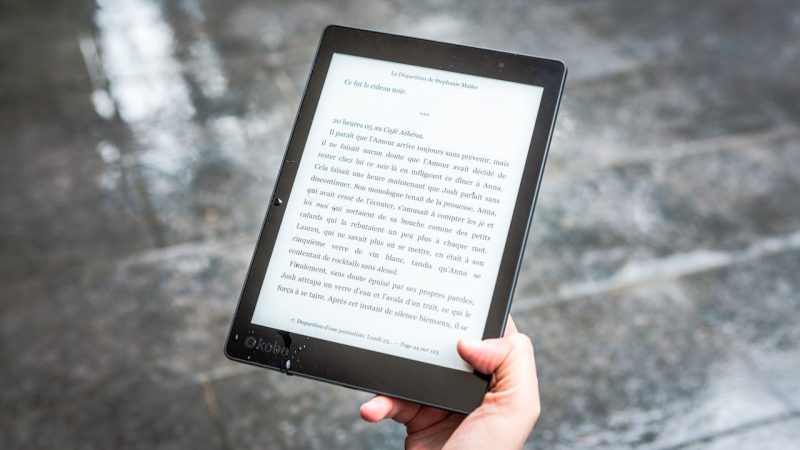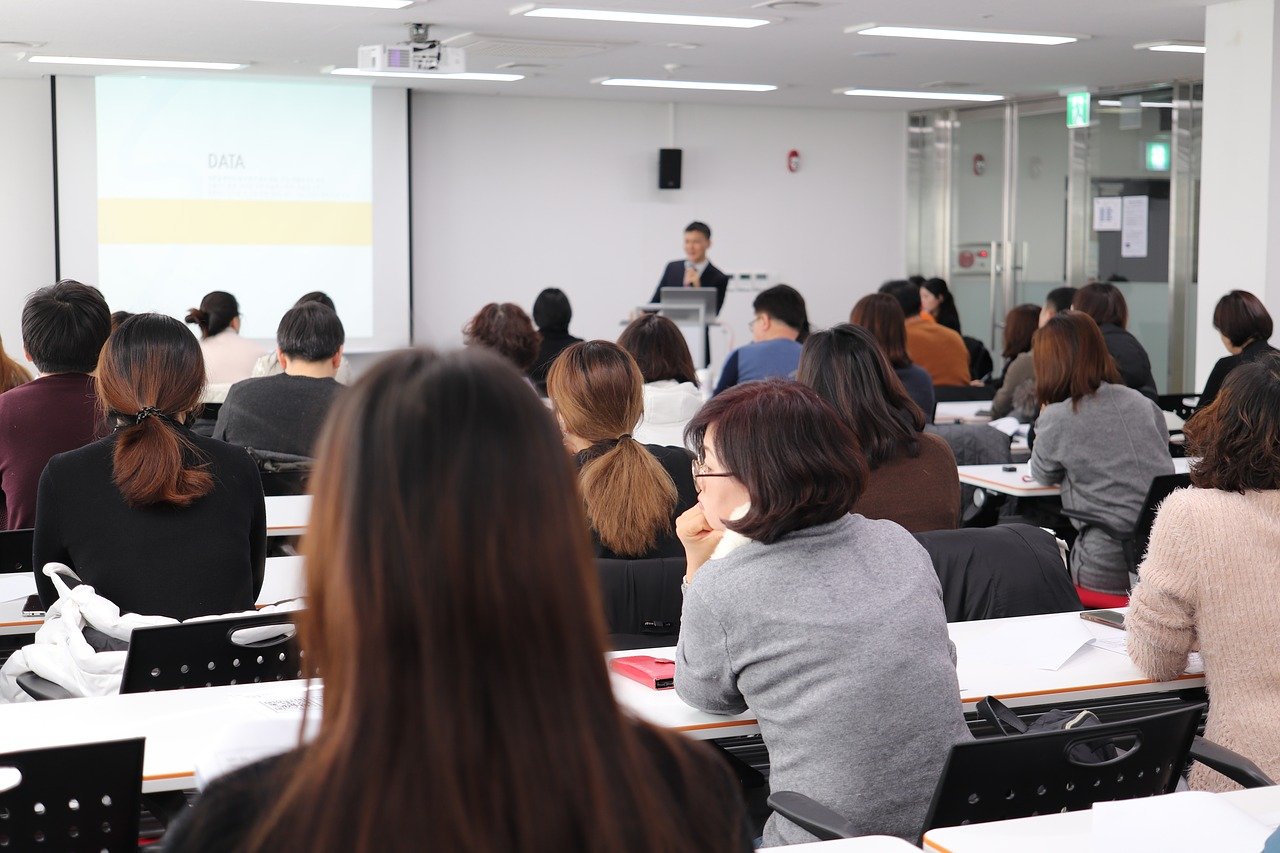Mastering the Art of Impactful Conference Presentations: A Comprehensive Guide

Conference presentations serve as vital platforms for professionals and academics to share their research, ideas, and expertise with peers, colleagues, and industry leaders. Whether presenting groundbreaking findings, innovative solutions, or compelling insights, the ability to deliver a captivating and effective presentation is paramount. A well-executed presentation not only communicates information but also inspires, engages, and leaves a lasting impression on the audience.
In today’s competitive landscape, mastering the art of conference presentations is more crucial than ever. It is not merely about conveying information but about capturing attention, fostering understanding, and sparking meaningful discussions. Fortunately, with the right approach and preparation, anyone can hone their presentation skills and leave a lasting impact on their audience.
In this article, we will provide a structured approach to help readers excel in their conference presentations. From understanding the audience and setting clear objectives to crafting engaging content and delivering with confidence, we will cover essential strategies and techniques to elevate your presentation game. Whether you’re a seasoned presenter looking to refine your skills or a newcomer seeking guidance, this comprehensive guide aims to equip you with the tools and knowledge needed to deliver compelling and memorable conference presentations.
1. Understanding Your Audience
In the realm of conference presentations, success hinges greatly on the presenter’s ability to understand and connect with their audience. Every audience is unique, comprising individuals with diverse backgrounds, interests, and expectations. Therefore, taking the time to comprehend your audience is paramount to delivering a presentation that resonates effectively.
The Importance of Audience Understanding:
Understanding your audience goes beyond merely knowing who will be in the room. It involves delving into their backgrounds, roles, expertise levels, and specific interests related to the conference topic. By gaining insights into these aspects, you can tailor your presentation to meet their needs and expectations, ultimately increasing its relevance and impact.
Tips for Researching Conference Attendees:
- Review Attendee Profiles: Many conferences provide attendee lists or profiles through event apps or registration portals. Take advantage of this resource to familiarize yourself with the individuals who will be present.
- Explore Social Media: Platforms like LinkedIn, Twitter, or professional forums can offer valuable information about attendees’ professional backgrounds, interests, and recent activities.
- Connect with Organizers: Reach out to conference organizers or contacts to gather insights into the attendee demographics, expectations, and any specific topics of interest.
- Analyze Past Events: If the conference is recurring, reviewing feedback or presentations from previous years can offer valuable insights into audience preferences and expectations.
Tailoring Presentation Content:
Once armed with insights into your audience, tailor your presentation content accordingly to ensure maximum relevance and engagement. Consider the following strategies:
- Align Content with Audience Interests: Focus on topics, examples, and case studies that resonate with the audience’s interests and challenges.
- Adapt Complexity Level: Tailor the depth of technical or industry-specific content based on the audience’s expertise levels, ensuring that it remains accessible and engaging.
- Address Pain Points: Identify common pain points or issues faced by the audience and offer relevant insights, solutions, or best practices to address them.
Emphasizing Audience Engagement:
Beyond crafting relevant content, actively engaging the audience throughout the presentation is essential for maintaining interest and fostering interaction. Consider incorporating interactive elements such as polls, Q&A sessions, or group discussions to encourage participation and address audience queries and concerns in real-time.
By prioritizing audience understanding, tailoring presentation content, and fostering engagement, presenters can create presentations that resonate deeply with their audience, leaving a lasting impression and facilitating meaningful dialogue and collaboration.
2. Setting Clear Objectives
In the realm of conference presentations, clarity of purpose is fundamental to success. Setting clear objectives not only guides the content and structure of your presentation but also helps you stay focused and effectively communicate your message to the audience. In this section, we will explore the significance of defining clear objectives and provide guidance on setting SMART objectives, accompanied by examples for clarity.
The Significance of Defining Clear Objectives:
Clear objectives serve as the foundation upon which your presentation is built. They provide a roadmap for what you aim to achieve and help you stay on track throughout the presentation preparation and delivery process. Moreover, clear objectives enable the audience to understand the purpose of your presentation and what they can expect to gain from it, enhancing engagement and receptivity.
Setting SMART Objectives:
To ensure that your objectives are clear, actionable, and achievable, consider using the SMART criteria:
- Specific: Clearly define what you aim to accomplish in your presentation. Avoid vague or broad objectives and instead focus on specific outcomes or deliverables.
- Measurable: Establish criteria or metrics to measure the success of your objectives. This allows you to track progress and evaluate the effectiveness of your presentation.
- Achievable: Set objectives that are realistic and attainable within the constraints of the presentation timeframe, resources, and audience expectations.
- Relevant: Ensure that your objectives align with the overall theme or purpose of the conference and are relevant to the audience’s interests and needs.
- Time-bound: Set a timeframe or deadline for achieving your objectives. This creates a sense of urgency and helps you prioritize tasks and allocate time effectively.
Examples of Well-Defined Presentation Objectives:
- Specific: “By the end of the presentation, attendees will understand the key principles of sustainable business practices and how to implement them within their organizations.”
- Measurable: “To increase attendee engagement, we aim to receive at least five questions from the audience during the Q&A session.”
- Achievable: “To showcase our latest product innovation, we will provide a live demonstration highlighting its features and benefits.”
- Relevant: “Our presentation will explore emerging trends in digital marketing and their implications for small businesses.”
- Time-bound: “Within 20 minutes, we will present three case studies illustrating successful strategies for improving employee retention rates.”
By setting clear, SMART objectives for your presentation, you provide clarity of purpose, enhance audience engagement, and increase the likelihood of achieving your desired outcomes. These objectives serve as guiding principles throughout the presentation preparation and delivery process, ensuring that your message resonates effectively with your audience.
3. Crafting Engaging Content
In the realm of conference presentations, content reigns supreme. Crafting engaging and impactful content is essential for capturing and maintaining the audience’s attention, conveying your message effectively, and leaving a lasting impression. In this section, we will delve into strategies for creating compelling and relevant content that resonates with your audience.
Understanding the Audience’s Needs and Interests:
Before delving into content creation, it’s crucial to have a deep understanding of your audience’s needs, interests, and expectations. Tailoring your content to address these factors ensures relevance and increases engagement. Consider the following approaches:
- Conduct audience research to gain insights into their backgrounds, roles, and challenges.
- Identify common pain points or areas of interest and tailor your content to address them.
- Use language and examples that resonate with the audience’s industry or expertise level.
Structuring Your Presentation:
A well-structured presentation provides clarity and coherence, guiding the audience through your key points and facilitating understanding. Consider the following structure:
- Introduction: Start with a captivating opening to grab the audience’s attention and introduce the topic.
- Main Points: Organize your content into clear, digestible segments, each addressing a specific aspect of your topic.
- Supporting Evidence: Use data, statistics, case studies, or anecdotes to support your main points and enhance credibility.
- Visual Aids: Incorporate visuals such as slides, diagrams, or videos to illustrate key concepts and break up the monotony of text.
- Conclusion: Summarize the main points, reiterate key takeaways, and leave the audience with a memorable closing statement.
Engaging Delivery Techniques:
In addition to compelling content, the delivery of your presentation plays a significant role in engaging the audience. Consider the following techniques:
- Maintain eye contact with the audience to establish rapport and convey confidence.
- Use vocal variety to emphasize key points, vary your pace, pitch, and volume to maintain interest.
- Incorporate storytelling to make abstract concepts relatable and memorable.
- Encourage audience participation through questions, polls, or interactive activities to foster engagement.
Incorporating Visual Elements:
Visual elements such as slides, images, and graphics can enhance understanding, reinforce key points, and make your presentation more visually appealing. Consider the following tips for incorporating visuals effectively:
- Keep slides simple and uncluttered, using concise bullet points and visuals to convey information.
- Choose high-quality images and graphics that are relevant to your content and reinforce your message.
- Use color schemes and fonts that are easy to read and visually appealing.
- Limit the use of animations and transitions to avoid distracting the audience from your message.
By crafting engaging content that resonates with your audience, structuring your presentation effectively, delivering it with confidence and incorporating visual elements thoughtfully, you can create a memorable and impactful conference presentation that leaves a lasting impression on your audience.
4. Rehearsal and Practice
Practice makes perfect, and nowhere is this more evident than in the realm of conference presentations. Rehearsing your presentation thoroughly is essential for refining your delivery, gaining confidence, and ensuring a seamless and impactful performance. In this section, we will explore the importance of rehearsal and provide practical tips for effective practice techniques.
The Importance of Rehearsal:
Rehearsing your presentation serves multiple purposes, all of which contribute to your overall success:
- Familiarization: Rehearsal familiarizes you with your content, enabling you to speak fluently and confidently without relying heavily on notes.
- Timing: Rehearsing helps you gauge the timing of your presentation, ensuring that you stay within the allotted time and cover all key points.
- Refinement: Rehearsal allows you to fine-tune your delivery, adjust pacing, and identify areas for improvement.
- Confidence: Repeated practice builds confidence, reducing nerves and helping you deliver a more polished and engaging presentation.
Practical Tips for Effective Rehearsal:
To make the most of your rehearsal time, consider the following tips:
- Practice Out Loud: Rehearse your presentation out loud rather than silently reviewing your notes. This helps you become comfortable with the flow of your speech and ensures smoother delivery.
- Use Props and Visual Aids: If you plan to use props or visual aids during your presentation, practice incorporating them into your rehearsal to ensure seamless integration.
- Time Yourself: Use a stopwatch or timer to track the duration of your rehearsal. Aim to stay within the allotted time, making adjustments as needed to fit the timeframe.
- Record Yourself: Record video or audio of your rehearsal sessions to assess your delivery, body language, and vocal tone. This allows you to identify areas for improvement and refine your performance.
- Rehearse in Different Settings: Practice your presentation in various environments to simulate the conditions of the actual presentation venue. This helps you adapt to different settings and potential distractions.
- Seek Feedback: Practice in front of a trusted friend, colleague, or mentor and ask for constructive feedback. Consider their input and make adjustments accordingly to enhance your presentation.
The Key to Success: Consistency and Persistence
Effective rehearsal requires consistency and persistence. Make rehearsal a regular part of your preparation routine, dedicating time each day or week to practice. Set specific goals for each rehearsal session and track your progress over time. Remember that mastery takes time, so be patient and persistent in your efforts to refine your presentation skills.
By incorporating rehearsal into your preparation process and following these practical tips, you can refine your delivery, gain confidence, and deliver a compelling and impactful conference presentation that resonates with your audience.
5. Captivating Opening and Closing
The beginning and end of your presentation are crucial moments that can significantly influence the audience’s perception and engagement. A captivating opening sets the tone for your presentation, grabs the audience’s attention, and establishes rapport. Similarly, a memorable closing reinforces key points, leaves a lasting impression, and inspires action. In this section, we will explore strategies for crafting compelling openings and closings that enhance the effectiveness of your presentation.
Crafting a Captivating Opening:
- Start with a Story: Begin your presentation with a relevant and engaging anecdote or story that illustrates the importance or impact of your topic. Stories captivate the audience’s attention and create an emotional connection.
- Pose a Provocative Question: Start with a thought-provoking question that challenges the audience’s assumptions or sparks curiosity. Encourage reflection and engagement by inviting the audience to consider their own perspectives.
- Share a Surprising Fact or Statistic: Open with a compelling statistic or surprising fact that piques the audience’s interest and highlights the significance of your topic. Use visuals or anecdotes to illustrate the statistic and make it more memorable.
- Use a Powerful Quote: Begin with a relevant and impactful quote from a respected authority or thought leader in your field. Quotes can inspire, provoke thought, and set the tone for your presentation.
- Engage the Audience: Start with an interactive element such as a poll, quiz, or quick activity that involves the audience and sets a dynamic tone for your presentation. Encourage participation and create a sense of anticipation.
Crafting a Memorable Closing:
- Summarize Key Points: Recap the main points of your presentation concisely, reinforcing key messages and takeaways for the audience. Summarizing helps solidify understanding and emphasizes the significance of your presentation.
- Offer a Call to Action: Inspire action by inviting the audience to take specific steps or implement key insights from your presentation. Whether it’s signing up for further resources, adopting new practices, or initiating change, a clear call to action motivates the audience to act.
- End with a Powerful Image or Story: Conclude your presentation with a memorable image or story that encapsulates the essence of your message and leaves a lasting impression. Visuals and narratives evoke emotions and make your closing more impactful.
- Provide a Thought-Provoking Question: End with a thought-provoking question that encourages reflection and stimulates further discussion. Invite the audience to consider how they can apply the insights from your presentation in their own context.
- Express Gratitude: Thank the audience for their attention, participation, and engagement throughout your presentation. Expressing gratitude creates a positive impression and fosters goodwill.
By crafting captivating openings and closings that resonate with your audience, you can create a memorable and impactful presentation that leaves a lasting impression. These moments set the stage for your presentation, establish rapport with the audience, and reinforce key messages, ultimately enhancing the effectiveness of your overall presentation.
6. Engaging the Audience
Engaging the audience is not just about delivering information; it’s about creating a dynamic and interactive experience that captures their attention, encourages participation, and fosters meaningful dialogue. In this section, we will explore various techniques and strategies for actively engaging your audience throughout your presentation.
Ask Thought-Provoking Questions:
- Start your presentation with a thought-provoking question to stimulate curiosity and encourage active thinking among the audience.
- Throughout your presentation, intersperse questions to gauge understanding, solicit opinions, or prompt reflection. Engage in dialogue with audience members to create a participatory atmosphere.
Incorporate Interactive Activities:
- Break up your presentation with interactive activities such as polls, quizzes, or group discussions. These activities not only break the monotony but also allow the audience to actively engage with the material.
- Use technology such as audience response systems or online polling tools to facilitate interactive activities and gather real-time feedback from the audience.
Tell Compelling Stories:
- Weave storytelling into your presentation to illustrate key points, evoke emotions, and captivate the audience’s imagination.
- Share personal anecdotes, case studies, or examples that resonate with the audience’s experiences and highlight the relevance of your message.
Encourage Audience Participation:
- Create opportunities for audience participation by inviting volunteers to share their insights, experiences, or questions.
- Use open-ended questions to encourage audience members to share their perspectives and contribute to the discussion.
Use Visuals Effectively:
- Incorporate visually appealing slides, videos, or infographics to complement your verbal presentation and enhance understanding.
- Use visuals to illustrate complex concepts, highlight key points, and maintain visual interest throughout your presentation.
Foster a Positive Atmosphere:
- Create a welcoming and inclusive environment where audience members feel comfortable expressing their thoughts and ideas.
- Use humor, warmth, and enthusiasm to connect with the audience and create a positive atmosphere.
Adapt to Audience Feedback:
- Pay attention to audience reactions and feedback throughout your presentation. Be responsive to their cues and adjust your approach accordingly.
- Address audience questions and concerns in real-time, demonstrating attentiveness and respect for their input.
Conclude with a Call to Action:
- End your presentation with a clear call to action that motivates the audience to apply what they’ve learned or take the next steps.
- Encourage audience members to share their insights, connect with you for further discussion, or explore resources related to the topic.
By actively engaging your audience throughout your presentation, you can create a memorable and impactful experience that resonates with them long after the session ends. Effective audience engagement fosters a sense of connection, promotes learning, and enhances the overall success of your presentation.
7. Effective Use of Visual Aids
Visual aids play a critical role in enhancing understanding, retaining attention, and reinforcing key points during a conference presentation. When used effectively, visual aids complement verbal communication, making complex information more accessible and engaging for the audience. In this section, we will explore best practices for incorporating visual aids into your presentation to maximize their impact.
Keep Slides Simple and Concise:
- Avoid overcrowding slides with too much text or information. Aim for simplicity and clarity to ensure that the audience can easily grasp the main points.
- Use bullet points or short phrases to convey key ideas, rather than full sentences or paragraphs.
- Limit the number of slides to maintain focus and prevent information overload.
Use High-Quality Images and Graphics:
- Incorporate high-quality images, diagrams, charts, and graphs to visually illustrate concepts and data.
- Choose visuals that are relevant to your content and enhance understanding. Avoid using decorative images that do not contribute to the message.
- Ensure that visuals are clear, legible, and properly sized to be visible to all audience members.
Maintain Consistency in Design:
- Use a consistent design theme throughout your presentation to create cohesion and reinforce branding.
- Choose a color scheme and font style that aligns with your topic and enhances readability. Avoid using too many colors or fonts that may distract from the content.
- Use templates or slide layouts to maintain consistency in formatting and layout across slides.
Incorporate Visual Variety:
- Mix and match different types of visual aids to keep the audience engaged and reinforce key points.
- Use a combination of images, text, videos, and animations to convey information in diverse ways.
- Incorporate transitions or animations sparingly to add visual interest without overshadowing the content.
Use Visuals to Tell a Story:
- Use visuals to support the narrative of your presentation and guide the audience through your key points.
- Arrange visuals in a logical sequence to create a visual storyline that complements your verbal presentation.
- Use storytelling techniques to contextualize visuals and make them more meaningful and memorable.
Practice with Visual Aids:
- Rehearse your presentation with visual aids to ensure smooth integration and timing.
- Familiarize yourself with the content and layout of each slide to facilitate seamless transitions during the presentation.
- Adjust lighting, screen resolution, and other technical settings to optimize visibility and clarity of visual aids in the presentation venue.
Be Prepared to Adapt:
- Be prepared to adapt your visual aids based on audience feedback, technical constraints, or unexpected circumstances.
- Have backup options in case of technical difficulties, such as printed handouts or alternative presentation formats.
By incorporating these best practices for effective use of visual aids into your presentation, you can enhance comprehension, engagement, and retention among your audience. Visual aids serve as powerful tools for conveying information, reinforcing key messages, and creating a memorable and impactful presentation experience.
8. Time Management
Effective time management is essential for delivering a successful conference presentation. It ensures that you cover all key points within the allotted time, maintain audience engagement, and leave a positive impression. In this section, we will explore strategies for managing your time effectively throughout the presentation process.
Know Your Time Limit:
- Familiarize yourself with the time limit allocated for your presentation. This allows you to plan and structure your content accordingly to ensure that you stay within the allotted time.
Allocate Time for Each Segment:
- Divide your presentation into distinct segments, such as introduction, main points, and conclusion. Estimate the time needed for each segment and allocate time accordingly.
Practice Timing:
- Practice your presentation multiple times, paying attention to the timing of each segment. Use a stopwatch or timer to track the duration of each segment and make adjustments as needed.
Prioritize Key Points:
- Identify the most critical points or messages you want to convey in your presentation. Prioritize these key points and allocate more time to them, while being concise with less critical information.
Be Concise:
- Avoid overloading your presentation with unnecessary details or tangential information. Focus on conveying essential information concisely to maximize impact within the allotted time.
Rehearse Transitions:
- Pay attention to transitions between slides or segments of your presentation. Practice smooth transitions to ensure that you maintain momentum and avoid wasting time on awkward pauses or interruptions.
Pace Yourself:
- Be mindful of your pace during the presentation. Avoid speaking too quickly or too slowly, as this can affect comprehension and engagement. Aim for a steady and confident pace that allows you to cover all key points effectively.
Monitor Audience Engagement:
- Pay attention to audience cues and feedback during your presentation. If you notice signs of disengagement or confusion, be prepared to adjust your pace or skip less critical information to stay on track.
Plan for Q&A:
- Factor in time for audience questions and answers at the end of your presentation. Be mindful of the time remaining and allocate sufficient time for this segment while ensuring that you still have time to conclude effectively.
Have a Contingency Plan:
- Prepare a contingency plan in case you run out of time or encounter unexpected disruptions during your presentation. Know which segments or points you can omit or shorten to adapt to time constraints while still delivering a coherent message.
By implementing these strategies for effective time management, you can deliver a polished and engaging conference presentation that respects the audience’s time and maximizes the impact of your message. Effective time management demonstrates professionalism, preparedness, and consideration for your audience, contributing to the overall success of your presentation.
9. Handling Questions and Feedback
Engaging with the audience through questions and feedback is a vital aspect of conference presentations. It provides an opportunity to clarify points, address concerns, and foster meaningful dialogue. In this section, we will discuss strategies for handling questions and feedback effectively during and after your presentation.
Encourage Audience Participation:
- Create a welcoming atmosphere that encourages audience members to ask questions and provide feedback. Remind them throughout the presentation that their input is valued and encouraged.
Be Prepared:
- Anticipate potential questions that may arise based on your presentation content. Prepare thoughtful and concise responses in advance to ensure you can address questions confidently and effectively.
Active Listening:
- Listen attentively to each question posed by the audience. Maintain eye contact with the person asking the question to demonstrate respect and attentiveness.
- Paraphrase or repeat the question aloud before answering to ensure clarity and confirm understanding.
Provide Clear and Concise Answers:
- Keep your responses clear, concise, and focused on addressing the question at hand. Avoid going off on tangents or providing excessive detail that may confuse or overwhelm the audience.
- If you are unsure of the answer, be honest and transparent. Offer to follow up with additional information or resources after the presentation.
Manage Time Effectively:
- Allocate sufficient time for audience questions and answers at the end of your presentation. Monitor the time closely to ensure that you can address as many questions as possible while staying within the allotted time.
Foster Positive Interaction:
- Use questions as an opportunity to engage the audience in dialogue and further exploration of the topic. Encourage follow-up questions and invite input from multiple audience members to enrich the discussion.
Address Feedback Constructively:
- Be open to receiving feedback from the audience, whether positive or constructive. Listen attentively to feedback, acknowledge it respectfully, and express gratitude for their input.
- Use feedback as an opportunity for reflection and continuous improvement. Consider how you can incorporate feedback into future presentations to enhance effectiveness and audience satisfaction.
Maintain Professionalism:
- Respond to questions and feedback with professionalism and respect, even if they are challenging or critical in nature. Avoid becoming defensive or dismissive, and instead, respond with empathy and diplomacy.
Follow Up:
- After the presentation, follow up with audience members who asked questions or provided feedback. Express appreciation for their engagement and offer to provide further information or assistance if needed.
By employing these strategies for handling questions and feedback effectively, you can create a positive and interactive experience for both yourself and the audience. Engaging with the audience in a constructive and respectful manner fosters rapport, enhances learning, and contributes to the overall success of your presentation.
10. Conclusion
Congratulations! You’ve now been equipped with a comprehensive toolkit for delivering a successful conference presentation. From understanding your audience and setting clear objectives to crafting engaging content, managing time effectively, and handling questions and feedback, each aspect plays a crucial role in creating a memorable and impactful presentation experience.
As you embark on your journey to deliver your presentation, remember the following key takeaways:
- Audience-Centric Approach: Always keep your audience at the forefront of your presentation preparation. Tailor your content to meet their needs, interests, and expectations, and engage them actively throughout the presentation.
- Clarity of Objectives: Define clear and achievable objectives for your presentation to guide your content and ensure that you stay focused on delivering your message effectively.
- Engaging Content: Craft compelling and relevant content that resonates with your audience, using storytelling, visuals, and interactive elements to enhance understanding and engagement.
- Effective Delivery: Practice and rehearse your presentation thoroughly to refine your delivery, maintain confidence, and manage time effectively during the presentation.
- Interaction and Engagement: Foster a dynamic and interactive environment by encouraging audience participation, soliciting questions and feedback, and fostering meaningful dialogue.
- Continuous Improvement: Use each presentation as an opportunity for learning and growth. Reflect on your experiences, seek feedback, and incorporate lessons learned into future presentations to continually refine your skills.
Remember, delivering a conference presentation is not just about sharing information; it’s about creating an experience that educates, inspires, and resonates with your audience. With careful preparation, thoughtful execution, and a commitment to excellence, you have the power to make a lasting impact and leave a memorable impression on your audience.





